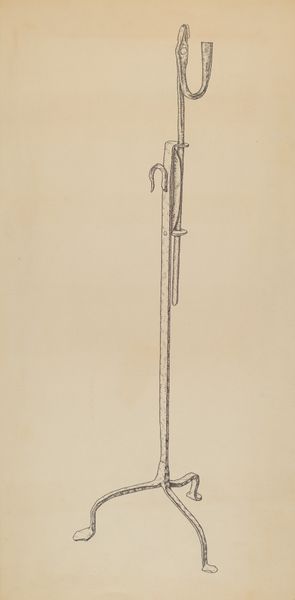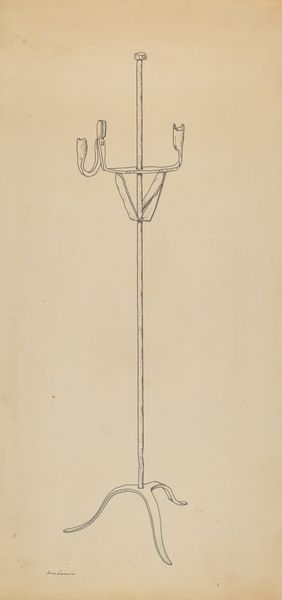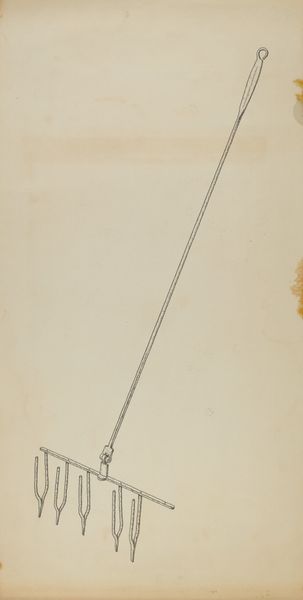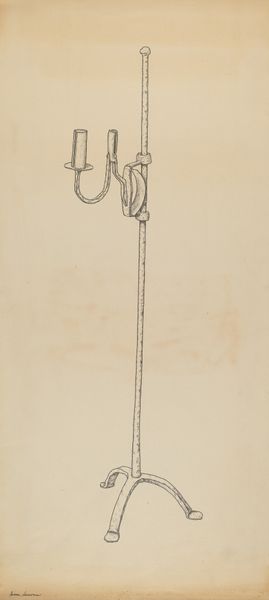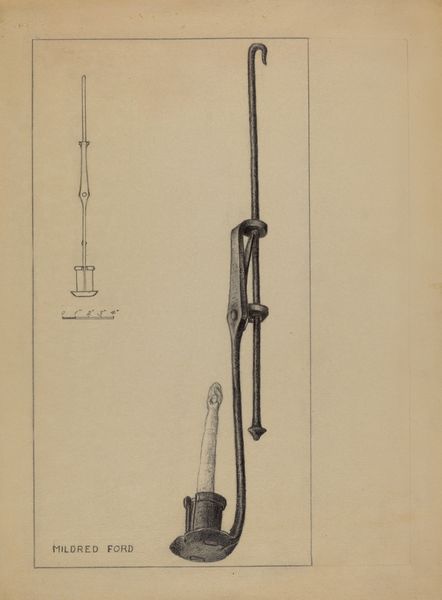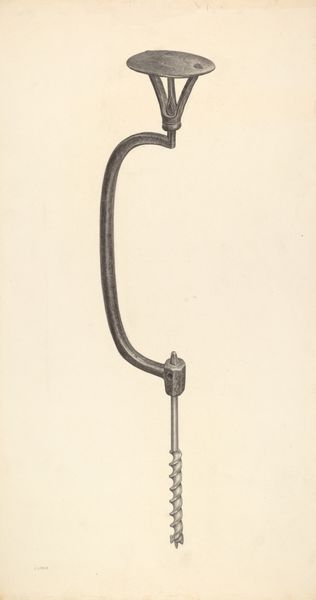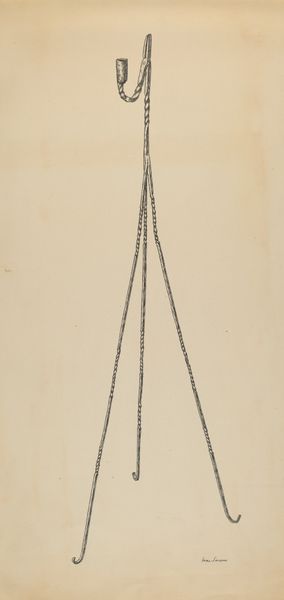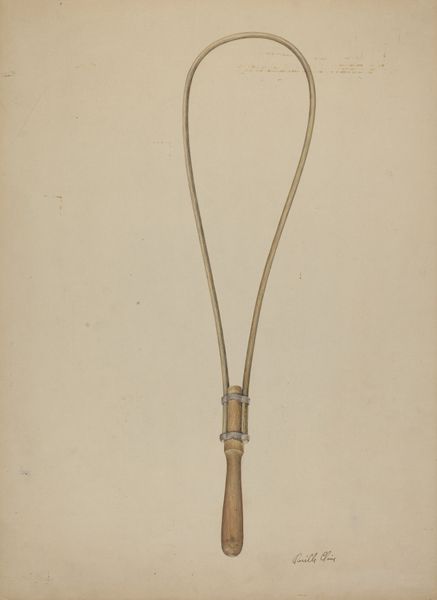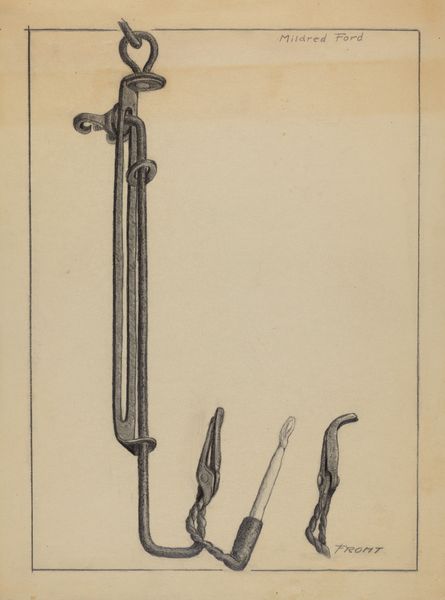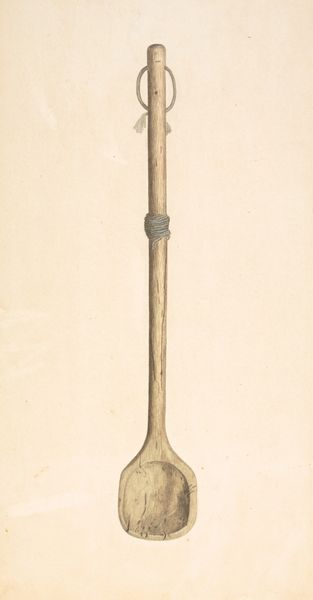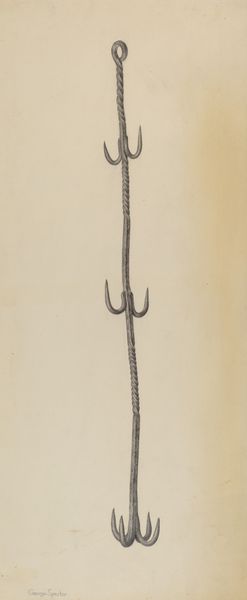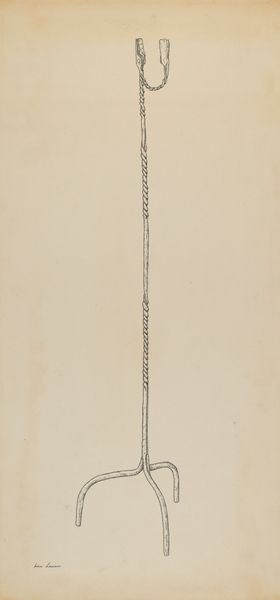
drawing
#
drawing
#
etching
Dimensions: overall: 52.4 x 25.4 cm (20 5/8 x 10 in.)
Copyright: National Gallery of Art: CC0 1.0
Curator: Looking at this etching, "Rush and Candle Stand," dating to about 1939 by Irene Lawson, my first thought is 'utilitarian grace.' There's a simple elegance in rendering such a functional object. Editor: Yes, the almost austere lines really emphasise the practicality of it. But when I look closer, the three legs twisting into rope-like forms, it suggests something beyond pure function. It's elevated, somehow. The curves, almost reminiscent of trefoil symbols... suggesting protection, perhaps. Curator: That's a fascinating point! Placing the object within a certain social framework is important; electricity wasn't as universal then, so this stand played a crucial role in everyday life. The object itself becomes symbolic of pre-electrification domesticity. Editor: Absolutely. Light, often linked to knowledge and spiritual presence, gains additional layers here. Consider the rush lights themselves, ephemeral flames held aloft. In terms of symbolic association, rush lights also mean fragility, something fleeting... like the safety of the home in an unsafe world. Curator: The candelabra format too is inherently public; how were rushlights produced, bought and sold at markets. To then elevate rushlights into art is interesting. The subject’s presentation allows us to imagine this intimate source of light illuminating everyday experiences for families and communities during that era. The politics of art is always linked with how accessible an art piece is in order to interpret and create community. Editor: Agreed. Irene Lawson gives us an intimate glimpse, almost sanctifying an ordinary, unseen, household object. It transforms into a signifier of resourcefulness, tradition, and connection to an earlier time. Curator: Looking again at the detail of line, I'm appreciating how Lawson memorialized the pre-electrification existence by ennobling common resources within that lifestyle. Editor: Precisely, she turned simple tools into carriers of layered meaning, which resonates even now.
Comments
No comments
Be the first to comment and join the conversation on the ultimate creative platform.
